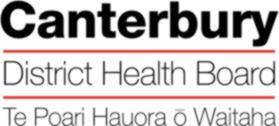
 CORPORATE OFFICE
CORPORATE OFFICE
Level 1
32 Oxford Terrace
Telephone: 0064 3 364 4160
Christchurch Central
Fax: 0064 3 364 4165
CHRISTCHURCH 8011
[email address]
13 May 2020
Ms Amy Van Wey Lovatt
Email: [FYI request #12429 email]; [FYI request #12429 email];
Dear Ms Van Wey Lovatt
RE Official information request CDHB 10287 and WCDHB 9405
I refer to your email dated 11 March 2020 requesting the following information under the Official Information Act
from Canterbury DHB and West Coast DHB regarding Best practice: Archiving, Storage, Biobanking of Human Tissue
for Diagnostic Purposes. Specifically:
Please note: West Coast DHB sends tissue samples to the Canterbury DHB Anatomical Pathology department for
processing and examination. Our response therefore covers both DHBs.
1.
I am writing to request a copy of the CDHB best practice protocol for the archiving, storage, or biobanking of
human tissue for diagnostic purposes, whether they are formalin fixed, paraffin embedded or pathology slides,
and the standards, legislation or scientific evidence which provides the basis for the CDHB protocol.
There is no specific laboratory protocol for the storage of formalin fixed, paraffin embedded samples since they
are known to be stable at room temperature for many years. We adhere to ISO15189* with regards to ensuring
the integrity of samples and the (Australian) National Pathology Accreditation Advisory Council’s Requirements for
the Retention of Laboratory Records and Diagnostic Material with regards to minimum storage times for wax
blocks, which is 10 years.
*ISO15189 is an international
standard that specifies the quality management system requirements particular to
medical laboratories.
2.
Is the CDHB best practice protocol for the archiving, storage, or biobanking of human tissue for diagnostic
purposes, whether they are formalin fixed, paraffin embedded or pathology slides, is a standard which is
universally adopted by all NZ DHB's and medical laboratories, or does each DHB or medical laboratory
determine their own best practice?
Each laboratory is likely to have its own policy manual, but these will be in keeping with the requirements set out
in ISO15189, which is a mandatory requirement for the laboratories to be accredited.
3.
Please explain the potential hazards of leaving formalin fixed, paraffin embedded or pathology slides in an
unsecure, non-temperature regulated environment (say a on an employee's desk outside of the laboratory)
for 2 months.
At Canterbury DHB, the employee’s desk would be WITHIN the laboratory, which is a secure facility only accessible
by swipe card. The temperature in the laboratory is controlled by ventilation and air conditioning systems. A
temperature which is tolerable for people will not adversely affect the slides.

4.
Please provide me with the name of the independent agency or agencies which provides oversight for
medical laboratories in NZ.
Medical laboratories are accredited by International Accreditation New Zealand (IANZ).
I trust that this satisfies your interest in this matter.
Please note that this response, or an edited version of this response, may be published on the
Canterbury DHB and West Coast DHB websites after your receipt of this response.
Yours sincerely
Carolyn Gullery
Executive Director
Planning, Funding & Decision Support


